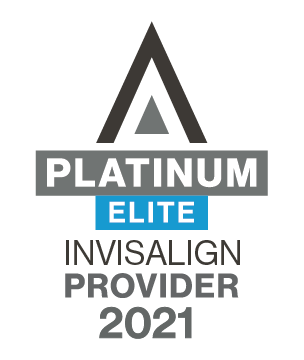For decades, metal braces were always the sole choice for those seeking to correct their teeth. However, this is thankfully no longer the case. Advancements in dental practices have given us more options than ever before when it comes to straightening our teeth. But with so many options comes a great deal of uncertainty. That’s why we’re here to help you determine which is the best treatment for you. Read on to learn more about Invisalign and metal braces.
1. Effectiveness
Metal braces and Invisalign are both excellent ways to straighten teeth and improve your dental hygiene. However, Invisalign is usually more successful for mild overcrowding of the front teeth, whilst conventional braces are thought to be better suited to more severe issues such as overlapping and rotation.
2. Treatment time
Invisalign treatment times are often shorter than conventional braces. Invisalign treatment tends to last from 6 to 18 months and requires you to wear clear aligners for 22 to 24 hours every day. Traditional braces are permanently attached to the teeth for the duration of your treatment, which can take up to 2 years. The average length of time for metal braces ranges between 16 and 18 months.
3. Appearance
Perhaps the biggest benefit of Invisalign is that the retainers are almost unnoticeable. For adult patients who don’t want their coworkers and clients to know they’re undergoing treatment, they can be invaluable. The same goes for teenagers who are self-conscious about their appearance. Unfortunately, metal braces are visible, but improvements over time mean they’re less intrusive than they once were. Many dentists will allow you to choose the colours of the brackets too.
4. Cleaning and oral hygiene
Whether you choose Invisalign or braces, oral hygiene is a priority. Cleaning is usually straightforward with braces since you can floss and brush as usual. If there is anything trapped in the metal, you can try cleaning with a smaller brush.
You can brush and floss as normal with Invisalign too since you’re able to remove the aligners, but keeping the aligners clean takes a little more work. They need to be rinsed after each meal and it’s important to brush your teeth with a specific Invisalign cleaning solution – your dentist should be able to recommend one.
5. Follow-up Visits
If you’re wearing metal braces for treatment, you’ll probably need to see your dentist once a month for a check-up and adjustments (replacing wires and elastic bands). Invisalign, on the other hand, requires fewer visits during the course of treatment as most of the work happens before you get the aligners. What’s more, there’s no need to visit your dentist for adjustments, so appointments are kept to a minimum.
Contact Withers Dental Today
From start to finish, the Withers Dental experience is designed to instill comfort and support in patients. We know how important a friendly environment, helpful guidance, skilled personnel and customised treatment programmes are to you.
We’re proud to offer a wide range of services including family and paediatric dentistry, emergency care, and both Invisalign and braces. So, don’t hesitate to get in touch with our expert and friendly team to find the perfect treatment for you today.

